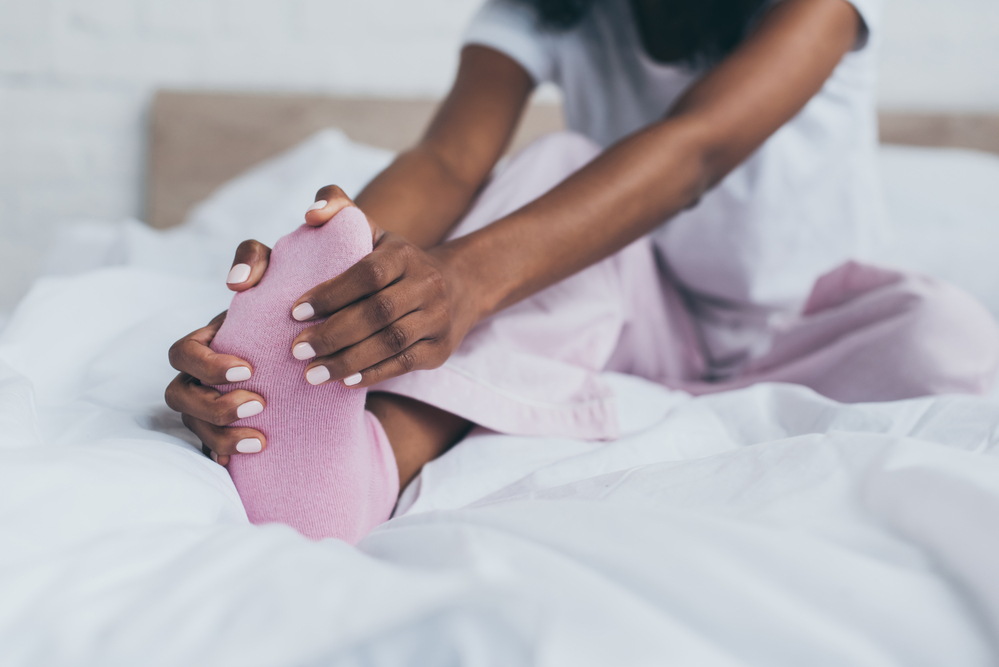Our feet bear the weight of every step we take, plus that of anything we are carrying. The luckiest of us can do this in shoes that provide decent support, but some of us are in footwear that does not help. Since our feet are just about guaranteed to always be in direct contact with something, they can act out with corns, bunions, or other painful conditions. Island Foot Clinics Podiatry, with new locations in Prince George, Williams Lake and Terrace and Campbell River, BC, can help you make your feet happy again.
What Is a Bunion?
In order to understand how to get rid of bunions, it is important to know what they are and how they are formed. A bunion is a bone-like bump that forms on the metatarsophalangeal joint where the big toe meets the foot. It is a slow progression that grows over time and may force the big toe to turn inward.
Naturally, the earlier they are spotted, the better. The primary sign/symptom is a bulge forming on the joint on the inner side of the foot. Calluses may form on the area due to the protrusion, increasing friction to a small spot. It may also become difficult to move the big toe without discomfort.
What Causes Them?
The exact cause is not entirely understood just yet, but there are known factors that are common across the patients:
- Genetics
- Foot injury
- Deformities
Additional Risk Factors
High heels and other ill-fitting shoes, can lead to added weight felt at the ball of the foot as well as the big toe being forced to point inward. This creates the conditions necessary for the growth of the bunion.
Inflammatory conditions such as rheumatoid arthritis can create the conditions that facilitate these growths, as can any other skeletal issues specific to the metatarsophalangeal joint
Complications
Though these growths are a distinct medical condition, they can lead to other complications. The growth could lead to bursitis – the inflammation of the fluid-filled pads that cushion the joints; hammertoe – an extreme bend to the middle joint of a toe that leads to pressure or pain; and metatarsalgia – pain and swelling of the ball of the foot.
How Can You Get Rid of These Growths
Knowing the causes and foundation of the problem arms us with the best cure of them: prevention! Since family history does play a factor, along with other medical conditions, the sooner the best care is given to your feet, the better. This does not mean that once you have one it will forever dominate your shoe size. Depending on the phase, treatments will differ.
Prevention
This is the best place to be, if simply because most options live here.
Shoes and Orthotics
Be sure to wear shoes that fit adequately. Size them by the comfort and support that they offer, not the number on the box. Minimize any lifting of the heel, avoiding anything above two inches. Know your feet well enough to know if, and which, support inserts can help ease the pressure on the foot.
Foot and Toe Exercises
Weak foot muscles can lead to walking issues which can lead to issues. Those in more sedentary situations should be sure to do exercises to strengthen the foot. In all cases, range of motion exercises are encouraged to prevent the wear and tear of excessive repetition.
Stretches also increase mobility and the range of motion of joints. This can help prevent joints from becoming locked into a small, set track.
General Pampering
If it isn’t possible to minimize the time spent on your feet, be sure to treat them well when you are off of them. Elevating your feet will help relieve the pressure gravity places on them. A hot foot soak is great for reducing inflammation and increasing blood flow. A cold soak, or ice pack, can be used to reduce swelling and throbbing.
Foot massages are also great for de-stressing any tension built up from being on them all day. A good rub with the hand is great, or rolling a tennis ball against the bottom of the foot can work as well without having to contort your legs to get to your feet.
Treatment
Depending on the genetic lottery results, or other disease formation, these painful growths may still happen. They are so common that one out of every four people will get one. Once they are there, many of the same preventative measures, above, can be used to keep them from advancing.
Since the growth actually exists in these cases, it’s best to take the suggestions as seriously as possible. Failure to give them the proper attention can lead to the issue getting worse and then creating its own complications such as hammertoe.
Shoes and Orthotics
No more heels – the focused weight on the ball of the foot only exacerbates the condition. No other preventative measure, alone or in any combination, will override or counteract the effects of undue, extra weight to the targeted problem area.
Do your shoe shopping at the end of the day so as to know what will feel best after several hours on your feet. Get any necessary padding or support (be sure to factor support accessories into shoe size) for your situation. Bunion splints are also available to shift the toe into alignment and may be implemented.
Foot and Toe Exercises
Toe stretching helps keep the range of motion from reducing due to the bunion. Flexing the toes against a solid surface strengthens the muscles of the toes, helping them function properly. Gripping exercises, such as picking up marbles from the floor with your toes, keeps dexterity up. Walking in sand gives the one-two punch of toe stretches and exercises. Arthritis patients, in particular, benefit from sand walking.
General Pampering
Elevate those feet when possible to keep swelling minimum. Hot and cold foot treatments are just as beneficial now as for prevention. Massages will be much more impactful and are a good time to implement some toe stretching while the muscles are good and loose.
Pain Management
Depending on the situation, the growth may have gone from uncomfortable to painful. If this is the case, NSAID pain relievers are recommended to address the pain. In the most extreme cases, a doctor may refer a patient to pain management for long-term treatment.
Surgery
Though these growths may be prevented and their progression slowed, there isn’t currently an exercise or a medication that can “cure” a bunion. That requires surgery.
Since surgery is a drastic step, it isn’t generally given when the issue is merely cosmetic. However, if the problem is affecting your day-to-day activities, it may be time to consider surgery as an option. This surgery may be done under local anesthesia with sedation or with general anesthesia: whichever is best for the situation.
Seek an Experienced Podiatrist
Don’t leave your foot health to luck. Reach out to us at Island Foot Clinics in Kelowna, BC today. We are available to treat all manner of foot and ankle issues. If you are in need of relief in the BC Canada area or wish to speak with someone to determine the current health of your feet, please feel free to contact us to book an appointment today!

